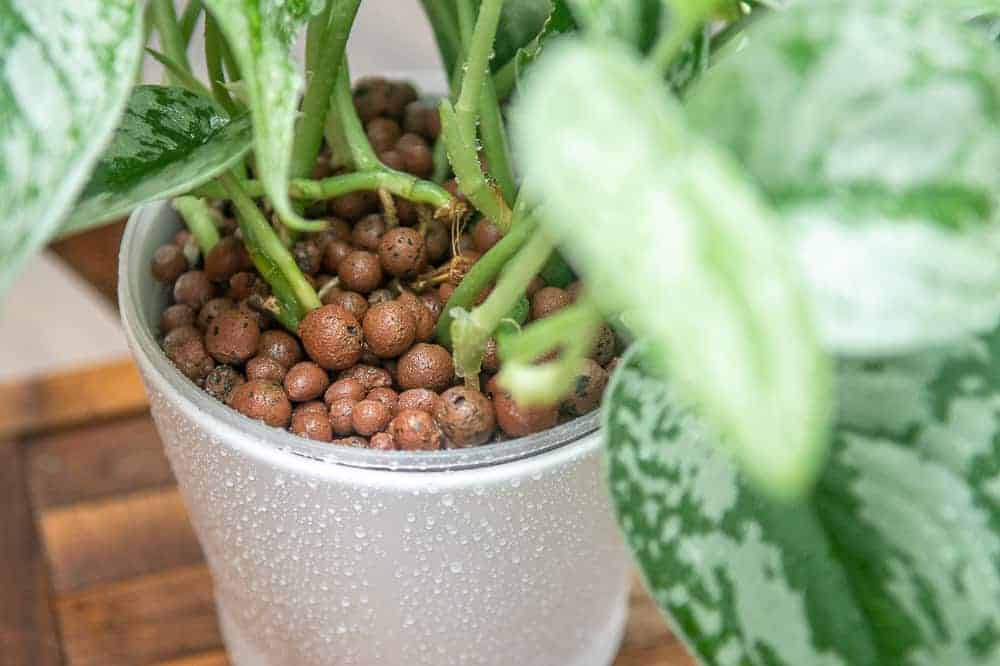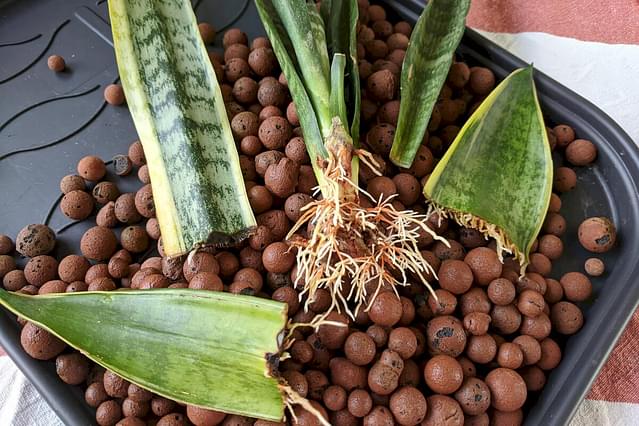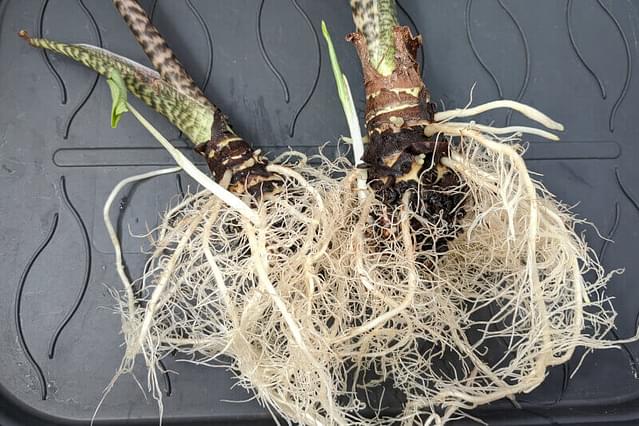Do you know leca?
Leca is an acronym for lightweight expanded clay aggregate.
Clay balls make up the growing medium, which is used instead of soil.
Hydroponic gardening typically uses it.
Before you find out, let’s hear Hanny’s story
I am a person who likes gardening
For me, taking care of plants can relieve stress
Besides plants outside, I also have a houseplant
One day, I was out for a walk
And I passed the garden shop…
I saw something strange, and there was a pot with soil that was shaped like a ball
I asked the seller what it was
And it was Leca, and I just found out
He said that this is better than soil.
I also tried to buy it for one of my houseplants. And indeed, my houseplant is better and healthier than ever.
I also intend to buy for another houseplant…
Now let’s get started…
Why Use Leca In Houseplants?

The concept of this ball is that it is a growing medium, like soil..
..in which plants can be grown by immersing them in water.
It’s made up of baked clay balls that expand when submerged in water.
You can easily feed plants when they are grown in soil, since the soil contains nutrients.
This ball does not contain any nutrients.
Hence, you might wonder: Why would anybody consider using this for growing their plants?
Read this post to learn the reasons for its use, and then perhaps you’ll give it a try yourself.
Keep reading…
What Is Leca?

Basically, LECA stands for Lightweight Expanded Clay Aggregate.
Clay balls are baked and then soaked up on a little water..
..making them expand in a way that water can be absorbed.
Although Leca looks like soil..
..they consist of clay balls and do not provide any nutrients.
It’s like soaking up a little water and expanding when you soak it up.
You have to put whatever nutrients your plants need into the water.
It does not help you understand the value of Leca..
..so let’s do something about it! Read on!
This is important for you…
Why Is Leca Useful?

Leca is composed of a collection of expanding clay balls…
…so it is only natural that you might wonder how it can benefit your plants any further.
Here is a list of the general benefits, followed by each specific benefit…
…so you can get a feel for them all from the beginning.
“If you build up the soil with organic material, the plants will do just fine..”
John Harrison, Inventor who invented the marine chronometer.
It’s Easier to Water Your Plants

It is important that the roots of the plants are not allowed to stand in water when using Leca.
You can create a false bottom with Leca and raise your plants’ roots above the surface of the water.
Once the clay balls have begun to absorb the water in the pot…
…you can add water until it is just beneath your plants’ roots.
This will prevent your roots from being exposed to the water.
Your plants can now choose how much moisture they want by drinking from the water…
…that has been sucked into the clay balls, rather than sitting in water all the time like they would with soil.
In an environment where your plants are very thirsty…
…they’ll start to grow toward the water at the bottom of the pot and drink directly from there.
The difference between plants grown in Leca and plants grown in soil is that plants grown in Leca…
…can choose when it’s convenient for them to drink.
By using Leca, you’re allowing your plants to take care of themselves.
As a result, plants know what they want and need to survive.
When using soil, you decide what the plant wants and needs.
This can be challenging at times, especially for beginners.
Less Risk of Root Rot

Watering is much easier when using Leca, since you water the plant when the water is gone from the pot.
Whether it’s the plant that has drank the water or the clay balls that have absorbed it with the soil…
…you only need to water when the pot is empty.
Incorporating additional water..
..even if the clay balls remain full of water, will not cause your plant to be overwatered.
This is due to the fact that the vine determines when to drink and how much.
If you added more water while the clay balls are still wet..
..you could kill the plant by overwatering it.
Because Leca’s clay balls have more air gaps between them, your plants have less chance of root rot.
The air gaps provide your plants’ roots with essential oxygen.
Root rot is usually caused by an insufficient amount of oxygen at the roots of your plants.
Leca eliminates this issue, and root rot is no longer a problem.
Reduced Pest Risks

The previous paragraph mentioned that you water your plants in Leca…
…when no more water remains in the bottom of the pot.
In this case, the plant can decide when to drink and avoid being overwatered.
Root rot is extremely unlikely in this case, it is not likely to occur.
As a result, bugs will not be attracted to the rotting roots and soil, which ultimately means fewer pests.
Also, unlike soil, Leca does not grow in a living environment.
In soil there is organic matter, which has nutrients and is alive, which means that it can provide nutrients to insects.
By avoiding insects altogether you reduce the chance of having a sick plant.
Insects usually transmit diseases to plants, making it easy to deal with one.
You Can Easily “Check-in” On Your Plants

While the roots of your plants are growing in soil..
..you will only see them when you’re repotting them.
In between planting and repotting.
..you will not see what the roots look like or how they’re doing.
You can, however, look at the roots every day if you choose to do so when growing your plants in Leca.
This is something you shouldn’t actually do..
..because some plants dislike change.
I clean the plants I grow in Leca every week or once every two weeks while also ensuring that the Leca is cleaned…
…or at least brushed, in order to have an understanding of the root system of the plants.
By checking the roots..
..I can place the plant in the pot differently based on where they are in the pot.
Having the ability to keep track of my plants made it possible for me to save my plant from certain death.
After removing rotting roots immediately and maintaining the plant well to prevent further damage….
…my plants began to grow again. This took a great deal of effort, but I have been rewarded by their growth.
Now…
Fertilizing Plants In Leca
:max_bytes(150000):strip_icc():format(webp)/GettyImages-1220078553-crop-25d3d33bd9b24775a7729542229055fa.jpg)
The nutrients your plants require to grow properly are not supplied by Leca.
Leca only waters your plants, so you will need to supplement the water yourself with nutrients.
It is fine to use the general hydroponics fertilizer..
however, you can also use specific fertilizers to help your plants.
These can include growth hormones and fertilizers to help the roots grow faster and stronger.
I’ve never used these, but I use a general hydroponics fertilizer, which seems to work well.
This may be something you want to try as well.
Hydroponics Nutrients (Fertilizer)

Unlike normal plant fertilizer..
..hydroponic nutrients contain special ingredients that your regular fertilizer doesn’t.
The soil provides all the nutrients for your plants..
..so you don’t need to add them to your normal fertilizer.
Because Leca doesn’t contain any nutrients by itself…
…a hydroponic fertilizer must contain these nutrients in order to keep your plants healthy.
For this reason, you cannot use normal fertilizer on plants grown in Leca, since it lacks these vital components.
Sum Up
Essentially, Leca is short for light expanded clay aggregate…
…which means these are baked clay balls that expand when they’re soaked in water.
The best thing about them as a growing medium is they make watering your plants much easier…
…and you don’t have to worry about pests.
You can also keep track of your plants easily.
If you intend to grow plants in Leca, the most important thing you should keep in mind is…
…that the roots should never sit in water and the water should have a hydroponics fertilizer of some sort.
Using it for your plants’ needs will ensure that they get all of the nutrients they need and have enough to drink.
I can highly recommend giving it a try!
Conclusion
Have you ever tried leca?
How did you react to your houseplant?
Is it better than soil?
Let’s share your experiences in the comments about Leca..
..so that others can try Leca too for their houseplants.
Check out more posts on our website like this one here!
Have an awesome gardening journey!
